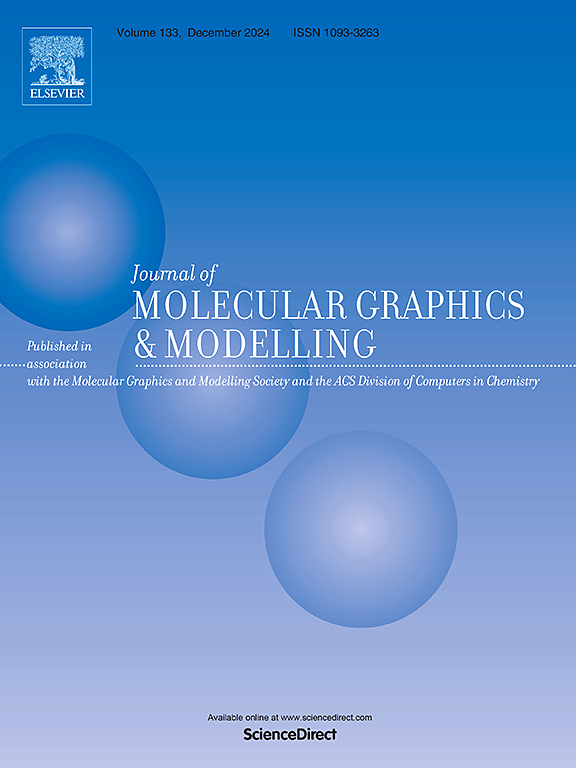Supervised machine learning and molecular docking modeling to identify potential Anti-Parkinson's agents
IF 3
4区 生物学
Q2 BIOCHEMICAL RESEARCH METHODS
引用次数: 0
Abstract
Parkinson's disease is a neurodegenerative condition that affects the brain's neurons, and causes malfunction of nerve cells and their death. A neurotransmitter called dopamine interacts with the part of the brain in charge of coordination and movement. In general, the brain produces less dopamine as Parkinson's disease worsens; therefore, it becomes harder to control the movements. In this study, a dataset collected from CHEMBL library was applied to build four machine learning models using three different descriptors functions to determine the best models with the best features and suggest the best adenosine inhibitors. Molecular docking of adenosine A2A (PDB ID: 3UZA) receptor was applied to identify the potential inhibitors. The machine learning and molecular docking results indicate that XGBoost model with RDkit features is an excellent model for this dataset to explore new Anti-Parkinson's agents.

有监督的机器学习和分子对接模型来识别潜在的抗帕金森药物
帕金森氏症是一种影响大脑神经元的神经退行性疾病,会导致神经细胞功能障碍和死亡。一种叫做多巴胺的神经递质与大脑中负责协调和运动的部分相互作用。一般来说,随着帕金森病的恶化,大脑产生的多巴胺会减少;因此,控制动作变得更加困难。在本研究中,利用CHEMBL数据库中的数据集,利用三种不同的描述符函数构建了四个机器学习模型,以确定具有最佳特征的最佳模型,并建议最佳的腺苷抑制剂。应用腺苷A2A (PDB ID: 3UZA)受体分子对接技术鉴定潜在抑制剂。机器学习和分子对接结果表明,具有RDkit特征的XGBoost模型是该数据集探索新型抗帕金森药物的理想模型。
本文章由计算机程序翻译,如有差异,请以英文原文为准。
求助全文
约1分钟内获得全文
求助全文
来源期刊

Journal of molecular graphics & modelling
生物-计算机:跨学科应用
CiteScore
5.50
自引率
6.90%
发文量
216
审稿时长
35 days
期刊介绍:
The Journal of Molecular Graphics and Modelling is devoted to the publication of papers on the uses of computers in theoretical investigations of molecular structure, function, interaction, and design. The scope of the journal includes all aspects of molecular modeling and computational chemistry, including, for instance, the study of molecular shape and properties, molecular simulations, protein and polymer engineering, drug design, materials design, structure-activity and structure-property relationships, database mining, and compound library design.
As a primary research journal, JMGM seeks to bring new knowledge to the attention of our readers. As such, submissions to the journal need to not only report results, but must draw conclusions and explore implications of the work presented. Authors are strongly encouraged to bear this in mind when preparing manuscripts. Routine applications of standard modelling approaches, providing only very limited new scientific insight, will not meet our criteria for publication. Reproducibility of reported calculations is an important issue. Wherever possible, we urge authors to enhance their papers with Supplementary Data, for example, in QSAR studies machine-readable versions of molecular datasets or in the development of new force-field parameters versions of the topology and force field parameter files. Routine applications of existing methods that do not lead to genuinely new insight will not be considered.
 求助内容:
求助内容: 应助结果提醒方式:
应助结果提醒方式:


